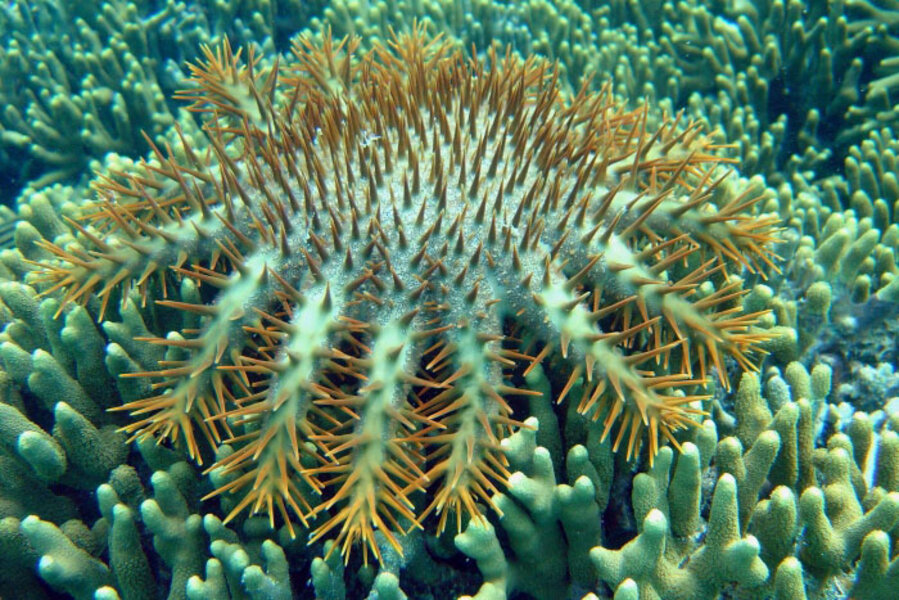Why are scientists sending a starfish-killing robot to the Great Barrier Reef?
This futuristic technology may look wacky, but it has a hopeful premise behind it: the eradication of crown-of-thorns (COT) starfish, which is responsible for 40 percent of the reef's total decline in coral cover. The starfish (which are technically sea stars and not actually fish) have thrived both because of a decline in competitive species and a rise in the level of nutrients in the water.
The robot was developed by scientists at Australia's Queensland University of Technology (QUT), with the goal of reaching a greater area of the reef than human divers could on their own. One of the most unique aspects of the COTSbot is its ability to discern whether or not something in the field is a COTS or not.
"If the robot is unsure that something is actually a COTS, it takes a photo of the object to be later verified by a human, and that human feedback is incorporated into the robot's memory bank,” Dr Feras Dayoub, who designed the COTS-detecting software, said in a statement on the university website.
As the BBC reports, the QUT roboticists are currently deploying the starfish hunter in the Great Barrier Reef for an initial training period, to make sure that its vision-based COTS-detection system is functional. By the time the COTSbot is fully operational in December, it will be able to make these distinctions on its own.
The COTSbot is equipped with stereoscopic cameras to give it depth perception, five thrusters to maintain stability, GPS and pitch-and-roll sensors, and a unique pneumatic injection arm to deliver a fatal dose of bile salts, according to its creator, Matthew Dunbabin from QUT's Institute for Future Environments. It is with this final factor which the roboticists are most pleased.
The idea for a COTSbot was initially formulated when Dr. Dunbabin first built a vision system for detecting COTS from underwater images in the early 2000s, but at the time removing a single COT starfish from the Great Barrier Reef required up to 20 manual injections. The technology had not yet developed for a single injection, delivered by a robot, to be possible.





